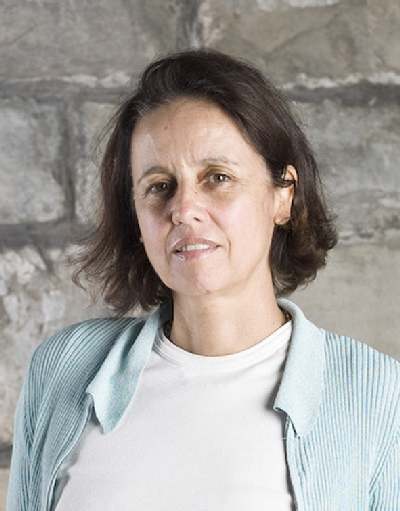 | Born in 1955 in Zürich (Switzerland) Lives and works in Zürich (Switzerland ) | Biographie Bibliographie Liste expositions |
 | Born in 1955 in Zürich (Switzerland) Lives and works in Zürich (Switzerland ) | Biographie Bibliographie Liste expositions |
After studying at the School of the Museum of Fine Arts in Boston and then at the National Institute of Fine Arts in Mexico, Ursula Biemann attended the School of Visual Arts in New York, graduating in 1986 and then joining the Whitney Independent Study Program in 1988.Ursula Biemann is an artist, theorist, and exhibition curator. Through her artistic and theoretical research, she focuses on the political sphere. She is interested in migratory phenomena and human mobility, borders, gender issues, and the rise of new technologies. Her work thus aims to establish a “counter-geography” by way of videos, installations, photographs, and text.
Ursula Biemann employs a documentary style. Her work is based on a geographical reality that drives and develops a personal analysis on the geopolitical origins of human and commercial movements within the context of globalisation. She generally collaborates with specialists – whether they are cultural theorists, anthropologists, NGO officials, or architects.
These collaborations complete her investigative fieldwork and thus lead to the development of an analysis aiming to deconstruct stereotypes and to reveal an alternative social reality. However, she does not set out a direct critical thought. Her critical strength lies in indirect discourse. With the limited means that she advocates, Ursula Biemann uses the power of images, narration, and the hierarchical structure of documents by way of montage to shed light on, for example, the consequences of migratory phenomena in Africa (Sahara Chronicle, 2006–2009), the effects of daily migrations at the Mexican border (Performing the Border, 1999), and the excesses of virtual communication (Writing Desire, 2000). She believes that the subjects she deals with are not intrinsically artistic, but that they allow her to experiment with aesthetic forms and theories similar to the essay.
Her first video Performing the Border (1999) is a documentary essay about the economic activity at the Mexican-US border in the maquiladoras. American multinationals use mostly female Mexican manual labour for the assembly of electronic components. The artist gathered on-site testimonies from these workers – workers who are forced to migrate on a daily basis. In the 2000s, Ursula Biemann was interested in two contemporary problematics already evident in Performing the Border – female slavery and migration zones.
In 2000, Writing Desire dealt with the trade of women on the Internet, and was followed by Remote Sensing (2001), which mapped out a topography of the sex trade. These two videos are completed by the World Sex Work Archive (WSWA) project, which, through interviews and photographs, details the migration of women around the world due to the sex trade. Migratory phenomena are at the heart of Europlex (2003), an experimental video on the activities at the Spanish-Moroccan border zone, produced in collaboration with anthropologist Angela Sanders. Among her more recent videos, X-Mission (2008) analyses the non-territorial status of Palestinian refugee camps, and Sahara Chronicle (2006–2009) investigates the migration of sub-Saharan populations to Europe.
Ursula Biemann is also an exhibition curator, which allows her to apply her theoretical thinking to other artists' works. She has worked on a number of exhibitions including Kültür at the Istanbul Biennial in 1997, whose theme was urban politics and the future of the city. In 2003, she presented Geography and the Politics of Mobility at the Generali Foundation in Vienna, Austria.In 2002, Ursula Biemann initiated the Transcultural Geographies network, a collaborative project on territorial and artistic investigation. She worked in collaboration with Lisa Parks, a researcher specialising in the media and its common practices, and with Angela Melitopoulos, videographer. In 2006, she participated in “The Maghreb Connection”, an international art and research project focused on migratory flows in North Africa. Its aim was to give a visual representation of the complexity of mobility in North Africa, following the anti-terrorist measures put in place by Western governments.
She has published a number of essays including Been There And Back To Nowhere (2003), Stuff It – The Video Essay in the Digital Age (2003), as well as a recent monograph entitled Mission Reports – Artistic Practice in the Field, Video Works 1998–2008 (2008). Her theoretical texts are regularly published in art and feminist journals.
Ursula Biemann is also a researcher at the Institute for Art and Design Theory at the Zurich University of the Arts. In addition, she teaches at the Geneva School of Fine Arts and participates in numerous seminars and international workshops. In 2008, she was appointed Doctor honoris causa in the Humanities by the Swedish University of Umeå. She received the Meret Oppenheim Prize in Switzerland in 2009.
Through her work as an artist and curator, Ursula Biemann shows how human movements constitute specific sociocultural landscapes and create micro-geographies. The artist thus reports on social realities relating to sensitive contemporary issues such as slavery, injustice, or migration. She therefore affirms her position as a challenger of traditional information media. Some of her videos are used by NGOs in their information campaigns.